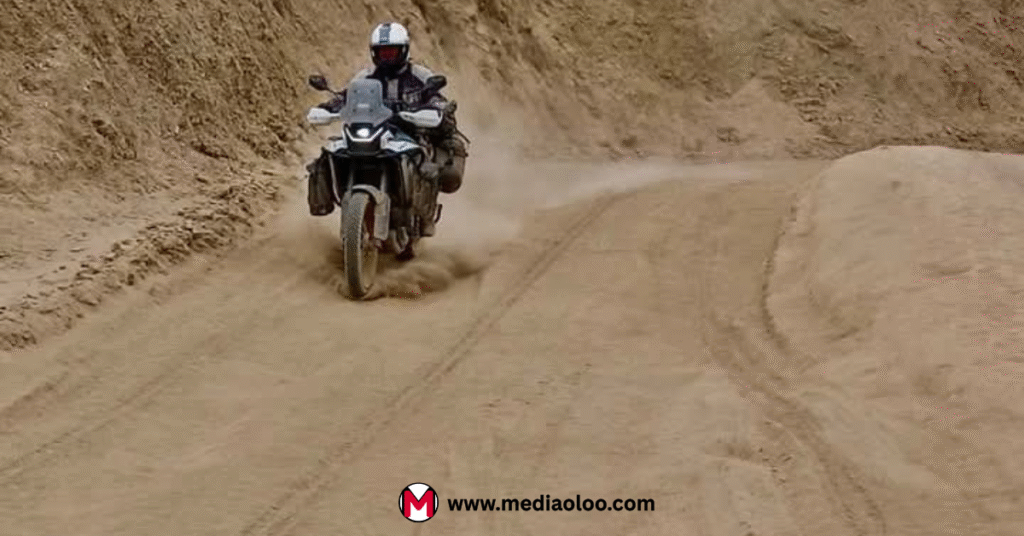When most people think of Afghanistan, they might imagine huge hilltop ancient fortresses, forests or stories from the history books. But hidden in the hills of Kabul is one of the country’s most enchanting and peaceful historical sites—the Gardens of Babur, known locally as Bagh-e-Babur.
A lush oasis of peace and cultural heritage, the Gardens of Babur is not just a park—it’s a living piece of history, a masterpiece of Mughal design and a beloved community space. Whether you’re an international traveler or fascinated by world history, this guide will walk you through (Gardens of Babur, Top Tourist Attractions in Afghanistan) so you can fully appreciate everything this special place has to offer.
What Are the Gardens of Babur?
Before getting lost in the attractions, it’s important to understand where you are. The Gardens of Babur were built in the early 16th century by Zahir-ud-Din Muhammad Babur, the founder of the Mughal Empire. Although he died in India in 1530, Babur loved Kabul and wanted to be buried there. Today, his final resting place is in the gardens he once designed himself. The place has been restored over the years, especially with the help of the Aga Khan Trust for Culture, making it a must-visit place for both locals and tourists. Now, let’s look at the top tourist attractions in the Gardens of Babur. 1. Tomb of Babur – The Heart of the Gardens The most important site in the Gardens of Babur is without a doubt the Tomb of Babur, where the Mughal emperor was buried. Despite his royal status, Babur requested a simple burial in the open air, without any elaborate mausoleum. His tomb is under the open sky, surrounded by stone carvings and Quranic inscriptions.
Why it's worth visiting:
- It's the final resting place of a prominent historical figure.
- The tomb is surrounded by trees and flowers, reflecting Babur's love for nature.
- You get sweeping views of Kabul - just as Babur once saw it.
- Travel Tip - : Visit early in the morning for peaceful contemplation and great photo opportunities.
2. Shah Jahan Mosque - A Masterpiece of Marble
Another notable attraction is the (Shah Jahan Mosque), built in the 17th century by Emperor Shah Jahan, the same ruler who built the Taj Mahal. This small, beautiful mosque is made of (white marble), with intricate tile work and carved inscriptions that display the finest artistry of the Mughal period.
What to appreciate:
- Its spiritual ambiance and historical significance.
- Craftsmanship - Small floral patterns and calligraphy engraved on the marble.
- Its serene atmosphere is perfect for contemplation.
Note: Although non-Muslims cannot enter during prayer times, you can admire the architecture and serenity from outside.

3. Charbagh Design – A Symbolic Design
The most striking aspect of Babur’s Gardens is its design. It follows the charbagh (meaning “four gardens”) design, an ancient Persian concept that divides the garden into four equal sections using walkways and water channels.
Why it matters:
- The design reflects the ideals of the Islamic paradise garden – "the garden beneath which rivers flow."
- It influenced other Mughal gardens, including the Taj Mahal and the Shalimar Bagh.
- The symmetry is calming and aesthetically stunning.
Walk on straight stone paths, sit under old cypress trees, and enjoy the gentle flow of water throughout the garden – it’s the definition of peaceful beauty.
4. Stone Terrace and Royal Pavilion – A View from Above
Near Babur’s Tomb is a (stone terrace and restored pavilion) that served as a royal viewpoint. Today, it is one of the best places to see the entire garden at a glance. The terrace offers a panoramic view of Kabul and the surrounding mountains, and is a favorite place to relax for both photographers and locals.
What to do here:
- Take a natural look at the garden's symmetrical design.
- Relax in the shade of the pavilion after a long walk.
- Take some Instagram, Facebook-worthy photos of the city below.
5. Orchards and vineyards - a living culture
Babur was not only a military leader, but also a gardener and poet. He planted a great variety of plants and fruits in his garden, including pomegranates, grapes, figs and cherries. Today, thanks to a restoration effort, the orchards and vineyards have been replanted based on Babur’s original writings.
Why visit:
- It's like walking through a living museum of agriculture.
- Depending on the season, you will find flowers, ripe fruit and birds chirping among the branches.
- It smells wonderful - especially in spring.
6. Water channels and pools - designed for reflection and flow
Water is an important element in Islamic garden design, symbolizing purity and life. In the Gardens of Babur, you will find (slowly flowing water channels), (stone-lined pools) and restored (fountains) that cool the space and give soothing sounds when running.
The best places:
- The central channel flowing from the upper terrace to the lower gardens.
- Pools reflecting the surrounding trees and structures.
- Shady corners where the water cools the air and brings a breeze.
Take a book, and sit on one of the stone rocks and let the peaceful drops of water take you along.
7. Museum and Visitor Center – Know Before You Visit
Near the entrance to the garden, the (visitor center) has a small (museum exhibit) with artifacts, photographs and historical context about Babur, Mughal architecture and the restoration of the site.
What you’ll find:
- A scale model of the gardens.
- Original plans and old photographs.
- Details about international efforts to restore the garden, especially after war-related damage.
If you’re the kind of traveler who likes to understand what’s behind what you’re seeing, this is your first stop.

8. Cultural Events and Local Life – The Living Garden
Babur’s Garden is not just a tourist attraction, it’s also a beloved public space for Kabul residents. Every weekday, families come for picnics, children play along the paths, and couples take wedding photos. The garden has also hosted musical performances, art shows, and literary readings that celebrate both traditional and modern Afghan culture.
If you're lucky, your visit might coincide with:
- A live concert or cultural event.
- A poetry reading inspired by Babur's writings.
- A local art display or photography exhibition.
9. Photography Hotspot - Capture History and Nature
For amateur and professional photographers, Babur’s Garden offers a great variety of textures, angles, and colors.
Top photo opportunities:
- A panoramic view of the central garden from the upper terrace.
- Close-ups of the marble inscriptions on Babur's tomb.
- Flowering trees and blooming vineyards.
- Locals relaxing and enjoying their day - of course always with permission.
10. Have a traditional Afghan picnic - local style
The last but one of the most fun things to do (with the locals) is have a classic (Afghan-style) picnic. Spread a mat under a tree, eat some local dishes like Kabuli Pulao, Bolani or Naan with yogurt and drink green tea while enjoying the atmosphere.
What makes it special:
- You experience the garden not only as a monument, but as part of daily Afghan life.
- The people-watching is heart-warming.
- Locals are often curious and friendly - don't be surprised if someone offers you some food or tells you a story.
Planning Your Trip: What You Need to Know
Best Time to Visit:
Spring (March to May) and autumn (September to November) offer the best weather and garden conditions.
Entry Fee:
A small admission fee is charged. Foreigners usually pay a little more, which helps maintain the garden.
Safety:
Always check current U.S. travel advisories. The security situation in Kabul can change, and safety should be your top priority.
Dress Code:
Afghanistan is a conservative country. Wear long pants, covered shoulders, and modest attire. Women should bring a scarf to cover their head if needed.
Local Guide:
Consider hiring a local guide (English-speaking guides are often available). Their stories bring the garden to life in a way that signs cannot.
Final Thoughts
The Gardens of Babur is more than just a historical attraction – it is a place where (past meets present), where art, architecture and nature merge in a peaceful preserved forest. From the (emperor’s mausoleum) to (gentle water channels), and from (centuries-old gardens) to (cultural gatherings), every part of the garden tells a story.
For travelers interested in (history, culture and authentic experiences), the Gardens of Babur, the top tourist attractions in Afghanistan offer an enriching and rewarding trip. If you ever get the opportunity to visit Kabul, this timeless green retreat should definitely be on your itinerary.
Recent Posts
- Travel Tips for Babur’s Gardens (Bagh-e-Babur), Kabul: And a Complete Guide for You
- Day Trips from Babur’s Gardens (Bagh-e-Babur): Exploring the Heart of Kabul and Beyond
- Local Cuisine at the Gardens of Babur (Bagh-e-Babur): Taste the Heritage and Flavors of Kabul
- Where to Stay Near Babur’s Gardens (Bagh-e-Babur) in Kabul: A Visitor’s Guide to Comfortable and Safe Accommodations
- Best Time to Visit Babur’s Gardens: A Seasonal Guide to Kabul’s Historic Gem

Amit Oraon
I will write form Blog post's
Join me on my journey to a Travel lifestyle

